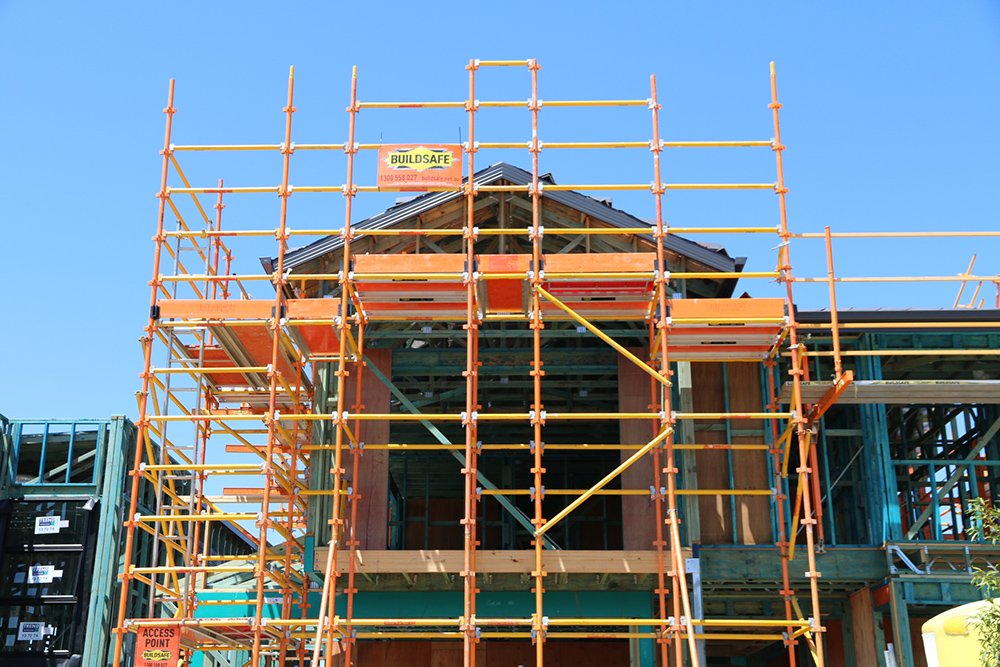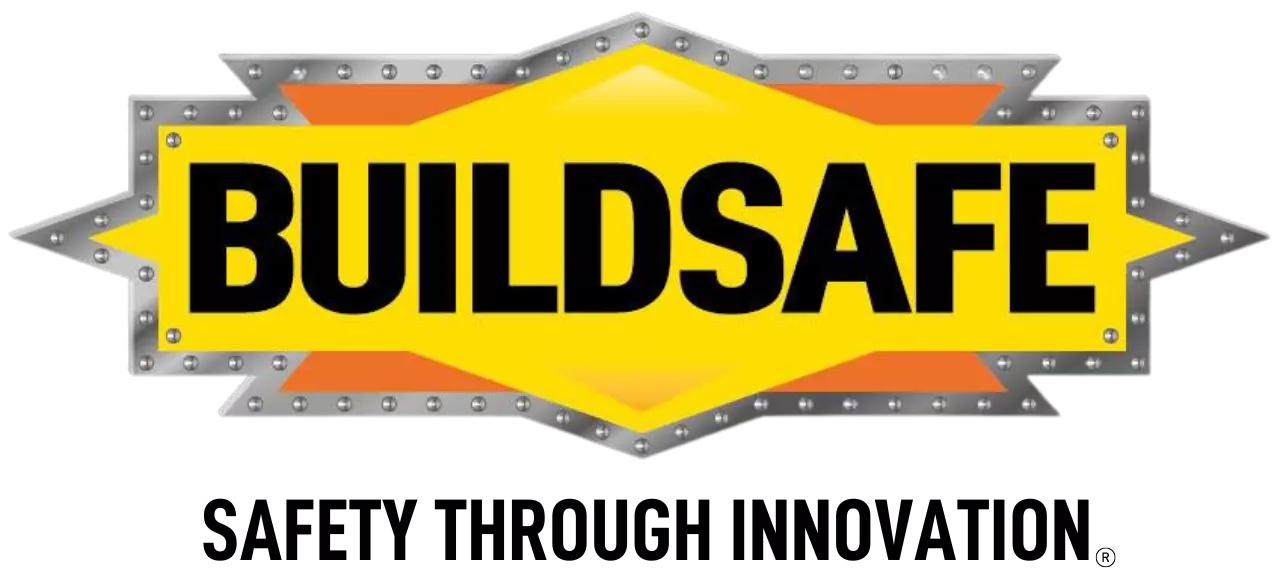A Buildsafe Guide: The Complete Scaffolding Safety Checklist for Construction Managers

Scaffolding and edge protection don’t always grab attention like a crane that’s swinging into place or the buzz of concrete trucks, but make no mistake about it, they’re the backbone of safety and productivity on a construction site.
If they’re not done right, everything else is at risk.
For construction managers, this isn’t just a matter of best practice. Under Australian standards, it’s the law. One shortcut, one missed inspection, and suddenly you’re looking at injuries, stop-work notices, and regulators breathing down your neck.
The good news? There’s a clear path to making sure that your scaffolding on site is always safe, compliant, and efficient.
And that’s precisely where Buildsafe comes in. As one of Australia’s most trusted edge protection providers and suppliers, Buildsafe has spent literally years fine-tuning systems that take the guesswork completely out of safety.
Are you ready to learn more?
Why Scaffolding Safety Matters
Think about how much scaffolding touches on a job site. Bricklayers, renderers, painters, roofers all rely on it.
When it’s solid, everything flows. When it’s dodgy, everything stalls. And the risks aren’t small.
A single scaffold collapse or an unsecured platform isn’t just a “minor hiccup.” It’s going to mean broken bones, lawsuits, and weeks of lost work.
Edge protection ties directly into this picture. A set of guardrails or barriers might look basic, but it’s more often than not the single thing that’s standing between a worker and a serious fall.
Without it, even the best scaffolding system in the world is going to become a hazard. Think of this way, scaffolding and edge protection are like two sides of the same coin: one provides access, and the other prevents accidents.
But both need equal attention.
Scaffolding Safety Checklist for Construction Managers
Here’s what should be front and centre on every manager’s scaffolding safety checklist.
Pre-installation checks are about doing your homework. Go ahead and walk the ground before anything goes up. Is the soil firm, or does it need compacting? Are there drainage issues that could soften the base after rain? Do you know the maximum loads for the scaffold, including workers, materials, and equipment? A single pallet of bricks can weigh over a tonne, so ignore that, and you’re playing with fire.
During-installation checks mean that you need to say sharp while the scaffold is being built. Only licensed scaffolders should be on the job, and all of the scaffold tags will need to be in place before each section is signed off. The braces and ties must also be fitted exactly where they’re supposed to go, and ladders or stair towers should be secure and accessible. Watch for improvised shortcuts. If someone’s clambering up frames instead of using proper access, stop the job!
Post-installation checks are where a lot of managers slip up. Inspections should be daily, and not just once a month or once every two weeks. Go ahead and walk the scaffold and look for loose couplers, cracked planks, or debris that’s blocking walkways. After storms or high winds, you should always assume that something’s shifted and then you can get it checked immediately.
And don’t patch over damage with tape or wire. Always replace faulty parts straight away!
Compliant Scaffolding Standards
So what actually makes scaffolding compliant?
In Australia, it comes down to AS/NZS 1576 standards and Safe Work Australia’s codes of practice.
These cover literally everything from load ratings to guardrail heights to plank spacing.
A scaffold without a proper tag isn’t compliant, period. And non-compliance doesn’t just put workers at risk. It can and managers in hot water too. Regulators have handed out six-figure fines for scaffolding breaches, and more than one project has been shut down over it.
Thankfully, Buildsafe’s scaffolding hire systems are built with compliance baked into every step of the process. That means that every scaffold is designed to standard and installed by licensed teams before being tagged for inspection.
Edge Protection: An Essential Part of Site Safety
If scaffolding is like the structure, edge protection is like the safety net. It’s required anywhere there’s a risk of falling: on roofs, along mezzanines, around platforms, and even on temporary works.
And it’s not just about ticking a box. Remember: edge protection is what keeps a slip from turning into a fall.
Buildsafe’s edge protection solutions are designed to fit every kind of site. For residential jobs, we have lightweight systems that clip in fast to keep small builds moving. For larger Tier One and Tier Two projects, we have modular systems that are tough enough to handle heavy traffic and shifting site conditions.
It’s worth noting that they’ve also been tested across thousands of projects, so managers know they’re proven and not experimental.
Edge Protection Installation Guide
Installing edge protection properly isn’t complicated, but it does demand precision.
Start by mapping every fall risk on site. Next, you’ll want to select the right system for the job (remember that roof pitch, height, and building type are all factors here).
The anchors must be set exactly as specified, and not just “close enough.” The guardrails should be fitted at 900mm and 1100mm, as per Australian requirements.
Then once the system is installed, you’ll want to test it physically for movement. Finally, go ahead and tag it with the installation date and then sign-off.
Where do people go wrong? Using makeshift barriers, setting rails at the wrong height, or failing to anchor posts securely are common mistakes.
And bear in mind that these aren’t minor slip-ups. They’re the kind of mistakes that will get flagged immediately during inspections and can shut a site down completely.
Edge Protection Installation Advice
For managers who are running multiple sites, efficiency and consistency are everything to making sure that a job is successful. That’s why you should standardise edge protection installation across projects so crews know the drill.
That means that you’ll need to match the system to the project, so think lighter setups for small jobs, and then reinforced systems for multi-storey builds. You should also make your inspections routine: check rails daily, and always re-inspect after bad weather.
And don’t hesitate to lean on experts. Working with experienced edge protection providers and suppliers like Buildsafe will mean that your installations are done right the first time, every time.
Scaffolding Hire: Choosing the Right Partner
Buying scaffolding might seem like an investment, but it comes with baggage too.
Think about it: you’re responsible for storage, for maintenance, and for proving compliance (even years on down the track).
With scaffolding hire, all of that disappears. You get compliant, and up-to-date systems that are then installed and signed off by licensed crews. And you can scale up or down depending on the project.
Buildsafe doesn’t just drop off scaffolding and leave. The service includes design, delivery, installation, and ongoing support.
For Tier One contractors juggling multiple development projects, ranging from individual housing lots to large-scale sites, commercial developments or even apartment builds, this means consistent compliance across every site.
For Tier Two or Three builders, it means avoiding the massive cost and hassle of owning equipment you’ll only use occasionally.
FAQs – Scaffolding & Edge Protection
What should a scaffolding safety checklist include?
Ground stability checks, load calculations, supervision during assembly, scaffold tags, daily inspections, and weather-related precautions.
How do you install edge protection safely?
Plan the layout, pick the right system, secure anchors correctly, install guardrails at compliant heights, test stability, and tag the setup.
What makes scaffolding compliant?
Meeting AS/NZS 1576 standards for load ratings, as well as for guardrail heights, plank spacing, and access requirements.
Why hire scaffolding instead of buying?
Hiring gives you compliant and current-based systems plus expert installation and support, and all without the cost or storage issues of ownership.
How often should scaffolding and edge protection be inspected?
Every day, after storms or strong winds, and with formal inspections at least once every 30 days.
For a full overview this guide from Safe Work Australia provides a useful starting point.
Conclusion
Ultimately, safe scaffolding isn’t just about compliance so much as it’s about keeping your workers protected and projects moving without interruptions.
A strong scaffolding safety checklist and reliable edge protection solutions are the often overlooked foundation of every successful build.
Managers who partner with Buildsafe get more than equipment; they get certified systems, access to cutting-edge technology, expert installation, and support that makes compliance straightforward.
At the end of the day, Buildsafe is the partner that keeps your site safe, efficient, and compliant regardless of whether you’re overseeing a major Tier One development, a Tier Two Tier project or a contractor working on a Tier Three build.
Download Buildsafe’s complete scaffolding safety checklist or get in touch to arrange compliant scaffolding hire and edge protection solutions for your next project!
